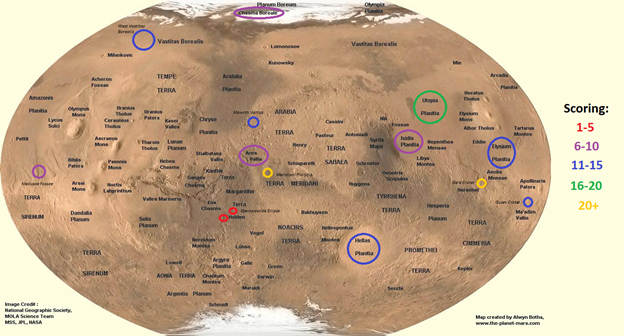Mars Water Extraction

With the continued efforts of planetary exploration of Mars, the possibility of a manned mission has increased, along with the need for resources. Both local and imported. Through the use of In-Situ Resource Utilization (ISRU), resources such as water, can be extracted from the local environment in a variety of ways.
Mars Water Extraction (MWE), was a research project created and lead by by Agnes Straatman. Special thanks to Dr. Aaron Hanai, Dr. Dilmurat Azimov, and Li-Anne Delavega for their guidance.
May 2018 we presented our 14 locations of interest at the Spring 2018 HESTEMP conference where NASA representatives were present.
The first phase of this project was to analyze existing research and compile the information into locations of intest for future pursuit on Mars regarding water. To do this we made a decision matrix focusing on the probability of water, the possibility of life, regional topography, past and current missions, and extraction technology. I was in charge of weather, mapping out mars, and focusing on regional topography of areas of interest regarding soil density, rover conditions, and landing radius. This project helped me become much more comfortable reading and researching lengthy academic papers, even when aspects of the research are out of my scope of understanding I am still able to discern the main points and the information I need.
December 2018 we presented our optimal landing location at the Fall 2018 HESTEMP conference.
Our Primary Goal was to to determine an optimal landing location, by narrowing down our 14 locations of interest, presented in Spring 2018 HESTEMP. Our Secondary Goal was to design and build a rover for NASA’s upcoming Robotic Mining Competition, this never came into fruition. During this time I continued researching locations on Mars using the Java Mission-planning and Analysis for Remote Sensing (JMARS) program.